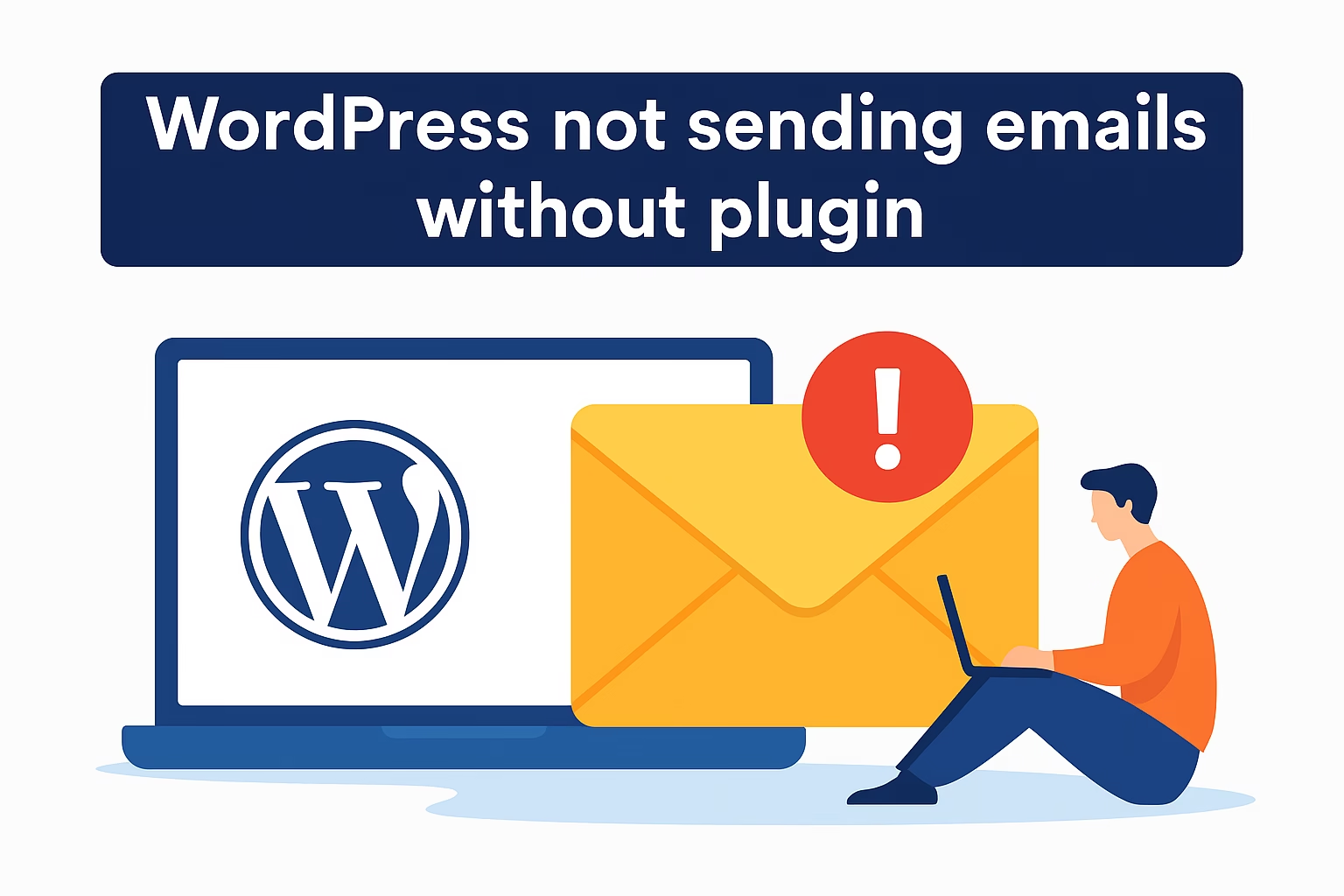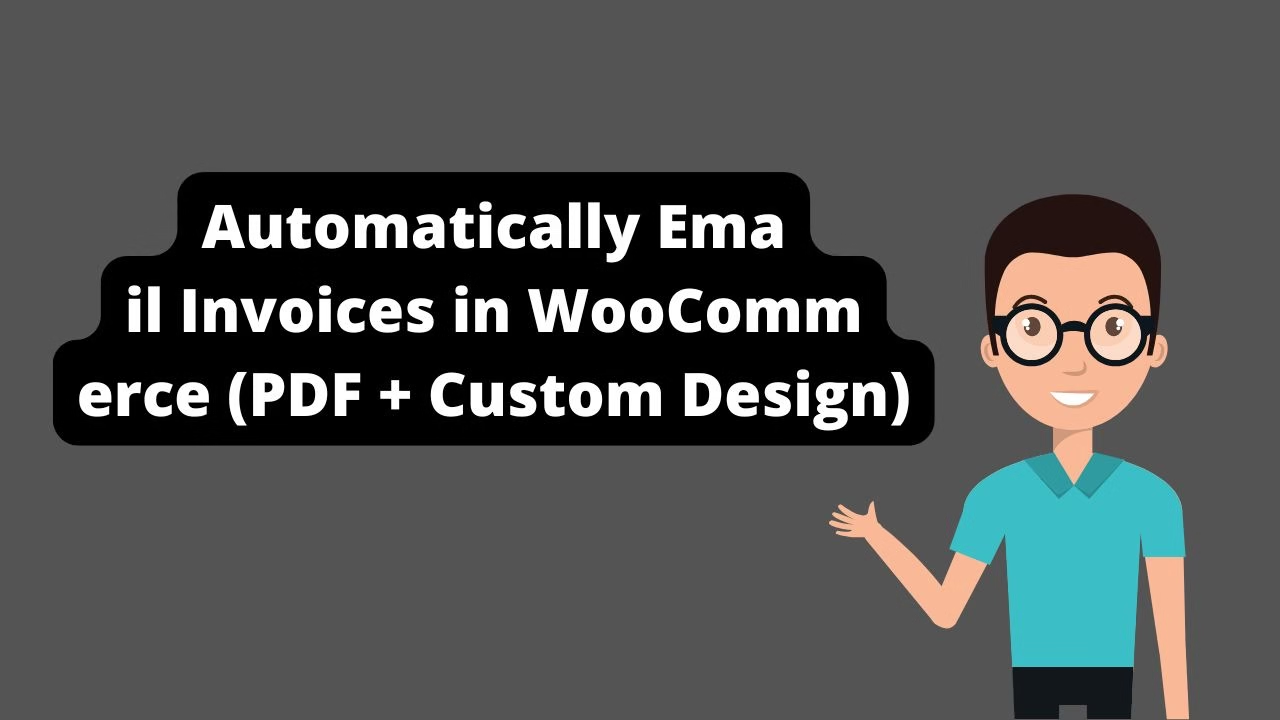Most WordPress sites fail to send emails due to hosting restrictions, lack of SMTP authentication, or misconfigured wp_mail() settings.
Introduction
WordPress not sending emails without plugin? You’re not alone — this is a common issue that frustrates a ton of site owners, but there’s a clean fix.
This is a common problem, often due to the default PHP mail function lacking proper authentication, leading to emails being marked as spam or not delivered at all. While plugins like WP Mail SMTP can resolve this, they add extra overhead. In this guide, we’ll walk you through configuring SMTP manually using code, enhancing email deliverability without relying on plugins.
Why WordPress Emails Fail to Send
This issue is especially common if you’re trying to fix WordPress not sending emails without plugin, as the default PHP mail function lacks proper authentication.
- PHP Mail Function Limitations: WordPress uses the
wp_mail()function, which relies on PHP’smail()function. This method doesn’t support authentication, making emails susceptible to being flagged as spam. - Hosting Server Restrictions: Some hosting providers disable the PHP
mail()function to prevent abuse, leading to email del - Lack of Authentication Protocols: Without proper authentication protocols like SPF, DKIM, and DMARC, emails are more likely to be rejected by recipient servers.
Benefits of Using SMTP
If you’re attempting to solve WordPress email issues without using a plugin, SMTP is the most reliable approach.
- Improved Deliverability: SMTP uses proper authentication, ensuring emails are recognized as legitimate by recipient servers.
- Enhanced Security: SMTP supports encryption protocols like SSL/TLS, securing email content during transmission.
- Better Control: Manual configuration allows for greater control over email settings, reducing reliance on third-party plugins.
How to Fix WordPress Not Sending Emails Without a Plugin (Step-by-Step)
1. Gather SMTP Credentials
Before proceeding, obtain the following details from your email service provider:
- SMTP Host (e.g.,
smtp.gmail.com) - SMTP Port (e.g.,
587for TLS or465for SSL) - SMTP Username (your email address)
- SMTP Password
- Encryption Type (
tlsorssl)
2. Define SMTP Settings in wp-config.php
Add the following lines to your wp-config.php file, just before the line that says
/* That's all, stop editing! Happy publishing. */:
define( 'SMTP_USER', 'your_email@example.com' );
define( 'SMTP_PASS', 'your_email_password' );
define( 'SMTP_HOST', 'smtp.example.com' );
define( 'SMTP_FROM', 'your_email@example.com' );
define( 'SMTP_NAME', 'Your Name or Website' );
define( 'SMTP_PORT', '587' ); // Use 465 for SSL
define( 'SMTP_SECURE', 'tls' ); // Use 'ssl' if applicable
define( 'SMTP_AUTH', true );
define( 'SMTP_DEBUG', 0 );Note: Replace the placeholder values with your actual SMTP credentials.
3. Configure PHPMailer in functions.php
In your theme’s functions.php file (preferably in a child theme to prevent overwriting changes during updates), add the following code:
add_action( 'phpmailer_init', 'configure_smtp' );
function configure_smtp( $phpmailer ) {
$phpmailer->isSMTP();
$phpmailer->Host = SMTP_HOST;
$phpmailer->SMTPAuth = SMTP_AUTH;
$phpmailer->Port = SMTP_PORT;
$phpmailer->Username = SMTP_USER;
$phpmailer->Password = SMTP_PASS;
$phpmailer->SMTPSecure = SMTP_SECURE;
$phpmailer->From = SMTP_FROM;
$phpmailer->FromName = SMTP_NAME;
}This code tells WordPress to use SMTP for sending emails, utilizing the credentials defined in wp-config.php.
Testing the Configuration
To ensure everything is set up correctly, you can send a test email using the following code snippet:
wp_mail( 'recipient@example.com', 'Test Email',
'This is a test email sent from WordPress using SMTP.' );Replace recipient@example.com with your actual email address. You can add this code temporarily to a template file or use a custom plugin to execute it.
💬 Need help setting this up? Contact me here
Troubleshooting Tips
- Enable Debugging: Set
define( 'SMTP_DEBUG', 1 );inwp-config.phpto enable debugging and view detailed error messages. - Check Firewall Settings: Ensure your hosting server’s firewall allows outbound connections on the SMTP port you’re using.
- Verify Credentials: Double-check your SMTP username and password for accuracy.
- Use App Passwords: If using services like Gmail with two-factor authentication, generate an app-specific password for SMTP.
Conclusion
If you’ve been struggling with WordPress not sending emails without a plugin, this approach gives you the control and performance you’re looking for.
By configuring SMTP manually, you enhance your WordPress site’s email reliability without adding extra plugins. This approach provides better control, security, and performance. Always ensure you handle your SMTP credentials securely and consider using environment variables or secure storage methods for added safety.
If your site is also showing a blank screen, check out our step-by-step guide on fixing the WordPress white screen of death — a common issue when plugin or theme conflicts occur. And if you recently changed your theme and things look broken, here’s how to fix broken layouts after switching WordPress themes without losing your design or user experience.




